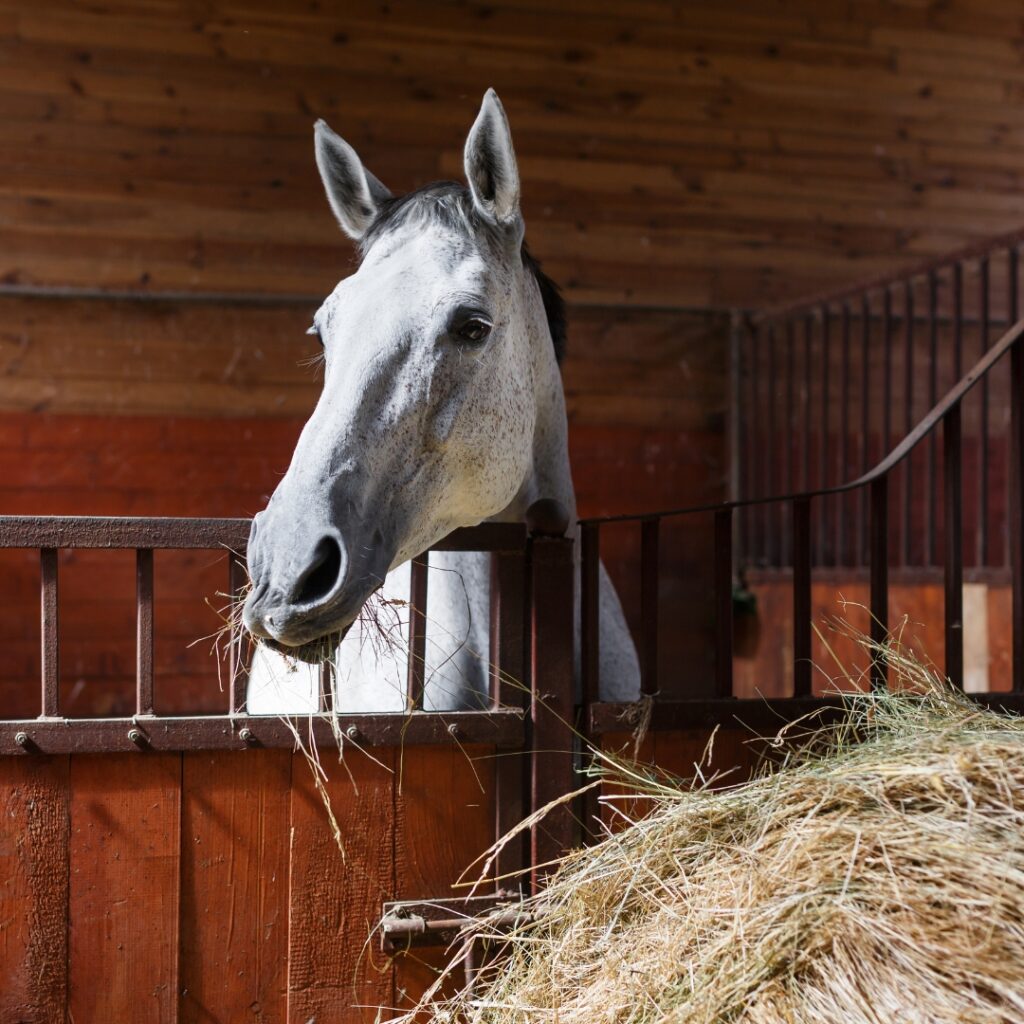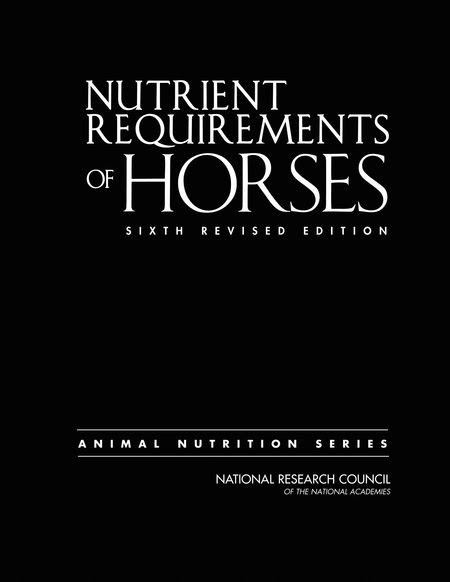
What is a balanced diet?
To have a balanced diet means that all the animal’s nutrient requirements are being met in the correct proportions. There are 6 key nutrient classes that must be accounted for in a horse’s balanced diet. They include carbohydrates, proteins, fats, minerals, vitamins, and water. The requirement for forage should also be considered when balancing a diet. Just because nutrient levels are met with a concentrate, doesn’t mean the horse will thrive on that program.
The NRC, 2007 (Nutrient Requirements of Horses) has nutrient recommendations published for horses in different life stages as well as under different work loads. Taking this document into account as well as newer publications is ideal when curating a balanced diet.
Nutrient Deficiencies
In Ontario, horses typically consume a grass or a grass/legume mixed forage. Although, having a mix of species in the forage is ideal, these diets can still lack key nutrients. To achieve top performance and well-being having a nutritionist curate a balanced diet for your horse is important.
Without having a balanced diet, undetected nutrient deficiencies can cause problems. Since nutrient deficiencies take time to produce noticeable symptoms, they can go undetected until a detrimental problem has occurred. Here is a list of nutrient deficiency symptoms that may arise:
– Weak and broken bones
– Easily fatigued during exercise
– Lethargic/low energy
– Increased risk of gastric ulceration
– Pre-mature joint deterioration
– Poor immune response
– Loss of muscle mass
– Lengthy recover from immune challenges
– Behavioural changes
– Weight loss
– Inability to gain muscle
– Weak hooves
– Limb deformity in young horses
– Dull coat
– General gastrointestinal tract issues
– Pica appetite
This is not a complete list, and many of these may be symptoms of other disorders as well.
Based on the above list, it is evident that although these symptoms can take months or years to develop, it can be quite serious when they do. The great news is that nutrient deficiencies in the diet are easily preventable.
Ratios
When you work with a nutritionist you can be confident that your horse is on a diet that not only meets their nutrient requirements but also provides nutrients in the correct proportions. There are key ratios that are crucial to equine health regarding nutrition. Three prevalent examples are the calcium to phosphorus ratio, the calcium to oxalate ratio and the zinc to calcium ratio. When these ratios are skewed, there can be health consequences and digestibility problems. A balanced diet should include information on these ratios as well.
Supplementing Your Horse
In equine nutrition, there is a plethora of commercial options to supplement your horse. However, when expert advice is not consulted, it can be very easy to supplement your horse incorrectly. For example, when a horse has a mineral deficiency or an unbalanced mineral ratio e.g., zinc to calcium, there is no point in using an expensive hoof supplement to attempt to fix the problem. This money would be much better spent on a balanced diet prior to continually adding commercial supplements.
Ration balancers are widely available on the market. They are typically designed to be fed at a low level to provide any missing or deficient vitamins and minerals. These balancers can be pelleted, loose or in a block form. Having a nutritionist evaluate your horse can help you ensure you are using the right ratio balancer for your horse.
It is also important to ensure that what you are feeding the horse is digestible. One study investigated zinc and calcium when thoroughbred yearlings were switched to a commercial feed. The feed had an increased mineral content as well as provided the minerals in an organic form (increased digestibility). The researchers found that after 110 days the yearlings had a significantly improved elemental composition of their hair coat.
In conclusion, just because you can’t see a nutrient deficiency doesn’t mean one doesn’t exist. Investing in your horse’s well-being through a balanced diet from a nutritionist can prevent problems down the road. It also ensures your horse is being nutritionally supported to the best of your ability.
If you have any questions or concerns about your horse’s nutrition email Madeline at: balancedbaynutrition@gmail.com

Pictured above is the NRC, 2007. This is the publication that almost all of the nutrient requirement guidelines are based on.
References:
Aytekin, I., Onmaz, A. C., Aypak, S. U., Gunes, V., & Kucuk, O. (2011). Changes in serum mineral concentrations, biochemical and hematological parameters in horses with pica. Biological trace element research, 139(3), 301-307.
Marycz, K., Moll, E., Zawadzki, W., & Nicpoń, J. (2009). The correlation of elemental composition and morphological properties of the horses hair after 110 days of feeding with high quality commercial food enriched with Zn and Cu organic forms. Electronic Journal of Polish Agricultural Universities, 12(3), 04.
National Research Council. 2007. Nutrient Requirements of Horses: Sixth Revised Edition. Washington, DC: The National Academies Press. https://doi.org/10.17226/11653.